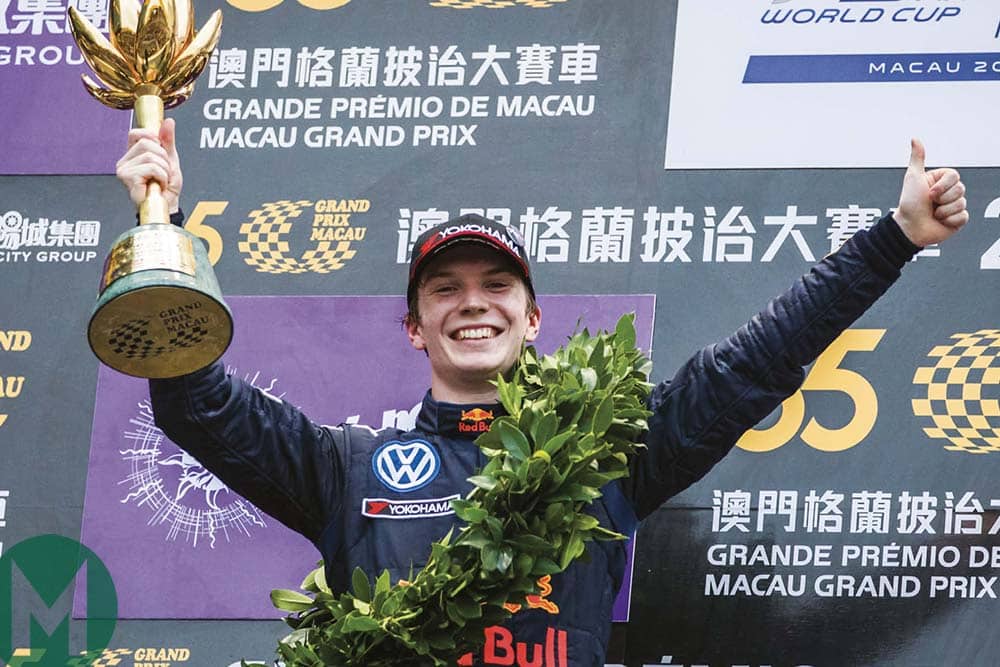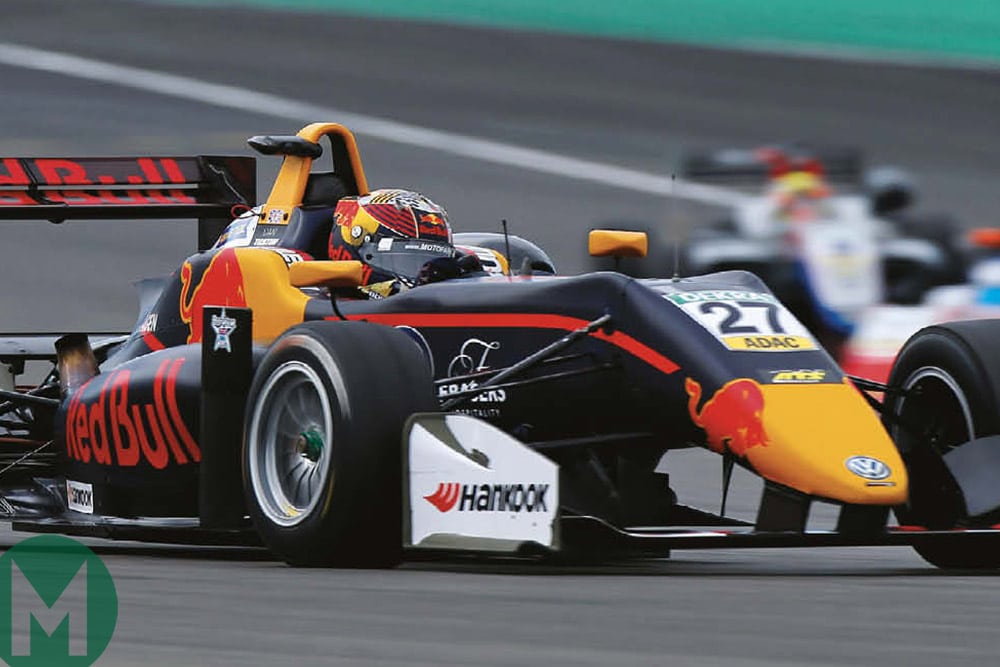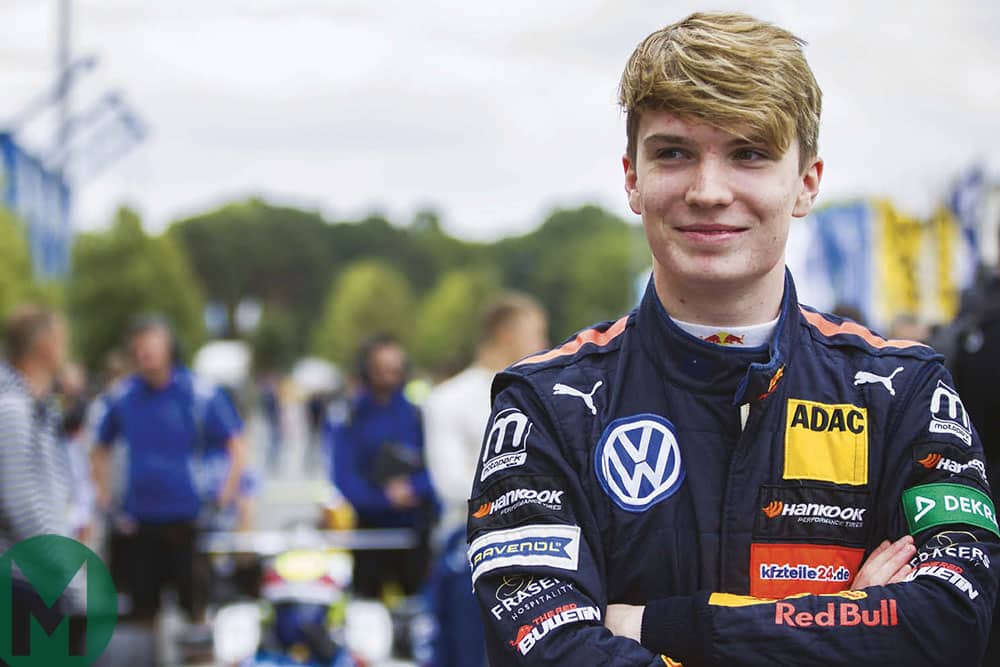International News
The significance of rising British star Dan Ticktum being sent by his backer, Red Bull, to race full-time in the Super Formula Championship in 2019 is obvious. It confirms the resurgence of the premier Japanese single-seater series as a genuine stepping-stone to Formula 1.
Ticktum is following in the footsteps of another Red Bull driver Pierre Gasly and will race, like the Frenchman, for Team Mugen in a Honda-engined car.
A successful season in Japan propelled Gasly into F1 at the end of 2017 with Toro Rosso and onto a seat with Red Bull Racing for 2019. The intention of Red Bull driver development chief Helmut Marko is clearly to prepare the 19-year-old Briton for an eventual graduation to the sport’s pinnacle.
Gasly, who finished as runner-up in his one-off season in Super Formula, isn’t the only driver to have used the series as a springboard to F1 in recent years. Stoffel Vandoorne, like Gasly a champion in Formula 2 in its GP2 iteration in 2015, raced the Japanese single-seaters in 2016 prior to his graduation from a test role with the McLaren F1 squad to a full race seat.
Super Formula’s significance as a training ground for F1 has been recognised by the FIA. It has increased the number of points successful drivers garner in their quest to qualify for a superlicence. From next year, the champion will get 25, rather than the previous 20, of the 40 points that must be earned before a driver qualifies for a licence that enables them to participate in F1.
That’s significant for a driver such as Ticktum. He would have been a candidate for one of the vacant seats at Toro Rosso in 2019 if he’d had enough points to qualify for a superlicence. His runner-up spot in the European Formula 3 Championship with the German Motopark Academy team left him short of the prerequisite total.
PERFECT PREPARATION
Ticktum, one of only three double winners of the prestigious Macau Grand Prix in the Formula 3 era, undertook two races in Super Formula last year and one double-header event in Formula 2.
He’s sure that the Japanese category provides the better training ground for F1, though he admits that his initial preference was to do F2.
“I was pushing for F2 because I thought it was the right stage for me, but after thinking a bit more I reckon that Super Formula is the better route,” he says. “There are a lot of things in its favour.”
A new generation of car — built, like its predecessor, by Italian constructor Dallara — comes on stream this year for a one-make formula with a difference. F2 is a pure ‘spec’ category, whereas the Dallara SF19 chassis is powered by either a Honda or a Toyota in-line four-cylinder turbo engine.
The new car comes with a significant increase in downforce, which will bring the cars much closer to F1 levels of performance than F2 does. That is just one of the positives, reckons Ticktum.
“The cars are quicker, which has to be good, but there are other things too,” he says. “The Pirelli tyre in F2 is meant to teach you about F1, but it’s a real struggle. You have to manage the Yokohamas in SuperFormula much more like an F1 tyre.”
Ticktum also points out that Super Formula is essentially a professional championship, which makes it distinct from F2.
“It’s Japan’s F1, if you like,” he says. “Many of the drivers have been doing it for 10 years, so the quality is at a very high level right through the field. It’s going to be tough to beat some of the Japanese regulars.”
Ticktum is also looking forward to racing on some great circuits. Suzuka, Sugo and Autopolis, all regarded as classics, are on the SuperFormula schedule.
A VOICE FROM THE PAST
André Lotterer is not just a three-time winner of the Le Mans 24 Hours. He won the Super Formula title when the championship was still known as Formula Nippon and notched up no fewer than 24 race victories during a 15-season stint in the series. He believes that there is no better training ground for F1.
“The only advantage of F2 I can see is that you go to the same tracks as F1,” says the German. “Super Formula offers a fully professional environment. In F2 there are good guys at the front, but also a lot of rich kids. If you want to win in Super Formula you’ve got to beat guys who’ve been doing it for years.
“The cars are super quick and are going to be even faster next year. It’s the closest thing to F1 out there. And you get to race on some really cool circuits.
“It is good to see Super Formula being recognised once again by F1 teams, because it had seemed a bit forgotten.”
1990s POMP
A series then known as the All-Japan Formula 3000 Championship provided F1 with a string of drivers during its 1990s heyday. Europeans to use the series as a springboard to F1 included Heinz-Harald Frentzen, Eddie Irvine, Mika Salo, Ralf Schumacher and Pedro de la Rosa. Salo famously dipped into the money he’d earned as a professional driver in Japan to fund his graduation to F1 with Lotus at the end of 1994.
Nine-time Le Mans winner Tom Kristensen’s four-year stint in Japan in the early 1990s included two seasons in F3000 and a near-miss in the championship in 1995. He credits the Japanese racing scene as a key part of his motor racing education.
“It was very important for me, because being away from Europe in a very alien culture toughened me up,” he says. “But it also taught me versatility. I raced single-seaters in F3 [he was 1993 Japanese champion] and F3000, sports cars and touring cars. That prepared me very well for the opportunities I had when I came back to Europe.”
One of those was the late call to drive Joest Racing’s Porsche WSC95 prototype at Le Mans in 1997. That provided the start – a winning one – to a career at the French enduro that has made him a motor sport legend.
There are no plans at the moment for Ticktum to race in the Super GT Series in Japan, but his move to the Far East could end up providing a perfect preparation for a future F1 graduation. And not just as a result of what happens out on the race track.



